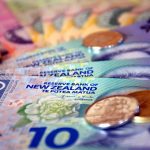Oct 25, 2022
VOT Research Desk
Market Insights, Considerations & Analytics
According to a Reuters survey of market strategists, turmoil in global sovereign bond markets is expected to continue for another six months to a year as central banks continue to raise interest rates to reduce inflation.
There is little indication that price growth is becoming less of a threat, even though it has been more than a year since inflation first started to be a concern and just over six months since the Federal Reserve of the United States finally made its first interest rate hike from close to zero.
Many bond investors were shaken out of their complacency by the bond markets’ extreme volatility and sell-offs since the Fed’s initial move.
Last week, the ICE BofAML U.S. Bond Market Option Volatility Estimate Index reached its highest level since March 2020. The index began to rise toward the end of last year. This pattern of extreme unpredictability is likely to continue.
In a Reuters poll conducted between October 19 and 21, a majority of bond strategists (14 out of 21) responded to an additional question predicting that the current turmoil in sovereign debt markets will continue for at least another six to twelve months, with one saying it would last one to two years. The remaining seven stated that they had less than six months.
Bond markets will likely experience severe volatility for at least another year, and it may even be longer.
Volatility will not diminish anytime soon. Market volatility may continue to be high despite the fact that central banks are beginning to move closer to that “pivot point,” as it were. Additionally, risk premiums rise with volatility.
The majority of major government bond yields have increased by more than 200 basis points since the beginning of the year, and the majority of central banks are well past the halfway point of their anticipated tightening cycles. As a result, yields may decrease over the course of the following year.
By the end of the year, it was anticipated that the benchmark 10-year Treasury yield would fall to 3.89 percent, down from its 14-year high of 4.27 percent on Friday. Then, it was predicted that it would fall even further, to 3.58 percent and 3.58 percent in the next six months, respectively.
However, these median forecasts were higher than those in the poll in September, indicating that yields continue to face upside risks.
That is largely due to the persistent effort made by the Federal Reserve of the United States to reduce inflation, which is currently running multiple times higher than its mandate of 2%.
In the current environment, inflation is simply too high for them (the Fed) to show any reluctance in being very, very aggressive, according to Benjamin Jeffery, a rates analyst at BMO Capital Markets.
Benchmark yields on German bunds and UK gilts have increased in tandem with those on U.S. Treasuries, despite the significant difference in hawkishness between the Fed and its closest peers, such as the European Central Bank and the Bank of England.
German bunds reached a new 11-year high of 2.49 percent on Friday as debt markets were affected by concerns about rising interest rates, with the ECB expected to raise rates by 75 basis points once more this week.
By the end of 2022, the poll predicted that bund yields would have fallen to 2.10 percent from their current level, and they would then rise slightly to remain around 2.20 percent for the next six months.
Then, it was predicted that they would return to 2.10% in a year.
When the government announced a slew of unfunded tax cuts on September 23, the UK gilt market was severely shaken, raising concerns about fiscal imprudence and driving benchmark borrowing rates to their highest level in 20 years.
With the reversal of the majority of those measures, investor confidence has somewhat returned. The prime minister has resigned and the former finance minister has been fired.
Gilt yields were anticipated to rise above 4.00% in the next six months from their current level of 3.90%.In a year, they were expected to fall back to 3.80%.









